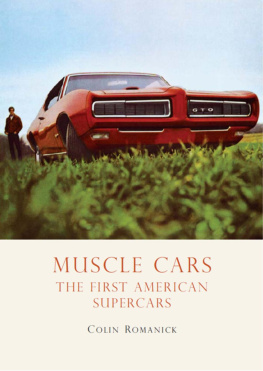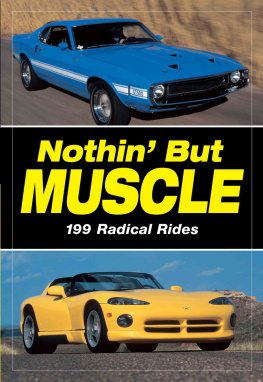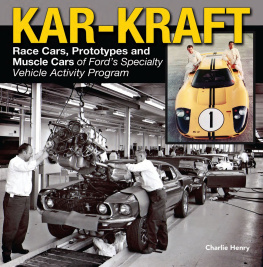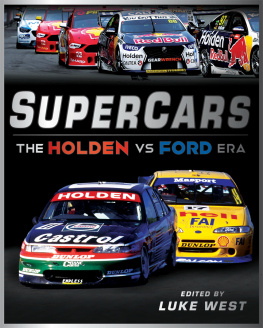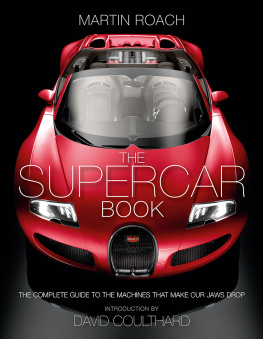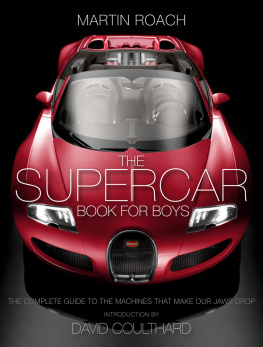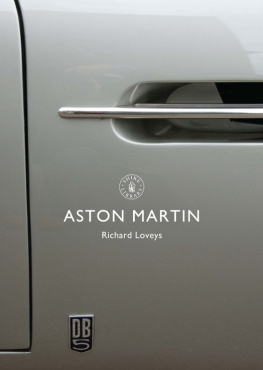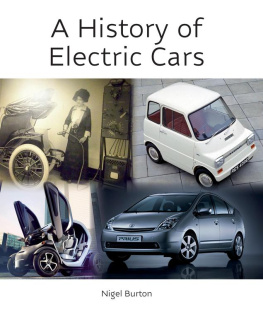Colin Romanick - Muscle Cars: The First American Supercars (Shire Library USA)
Here you can read online Colin Romanick - Muscle Cars: The First American Supercars (Shire Library USA) full text of the book (entire story) in english for free. Download pdf and epub, get meaning, cover and reviews about this ebook. year: 2019, genre: Non-fiction. Description of the work, (preface) as well as reviews are available. Best literature library LitArk.com created for fans of good reading and offers a wide selection of genres:
Romance novel
Science fiction
Adventure
Detective
Science
History
Home and family
Prose
Art
Politics
Computer
Non-fiction
Religion
Business
Children
Humor
Choose a favorite category and find really read worthwhile books. Enjoy immersion in the world of imagination, feel the emotions of the characters or learn something new for yourself, make an fascinating discovery.
- Book:Muscle Cars: The First American Supercars (Shire Library USA)
- Author:
- Genre:
- Year:2019
- Rating:4 / 5
- Favourites:Add to favourites
- Your mark:
- 80
- 1
- 2
- 3
- 4
- 5
Muscle Cars: The First American Supercars (Shire Library USA): summary, description and annotation
We offer to read an annotation, description, summary or preface (depends on what the author of the book "Muscle Cars: The First American Supercars (Shire Library USA)" wrote himself). If you haven't found the necessary information about the book — write in the comments, we will try to find it.
Colin Romanick: author's other books
Who wrote Muscle Cars: The First American Supercars (Shire Library USA)? Find out the surname, the name of the author of the book and a list of all author's works by series.
Muscle Cars: The First American Supercars (Shire Library USA) — read online for free the complete book (whole text) full work
Below is the text of the book, divided by pages. System saving the place of the last page read, allows you to conveniently read the book "Muscle Cars: The First American Supercars (Shire Library USA)" online for free, without having to search again every time where you left off. Put a bookmark, and you can go to the page where you finished reading at any time.
Font size:
Interval:
Bookmark:
THE FIRST AMERICAN SUPERCARS
Colin Romanick
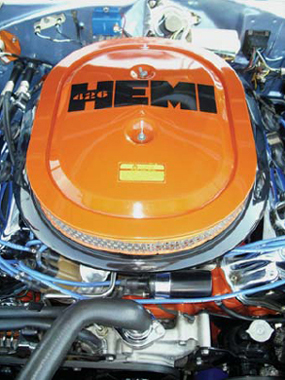

SHIRE PUBLICATIONS
While most 1969 Plymouth Road Runners were equipped with a 383-cubic inch engine, a 426-cid Hemi was available. Fewer than a thousand Road Runners had a Hemi under the hood, and only six were convertibles.
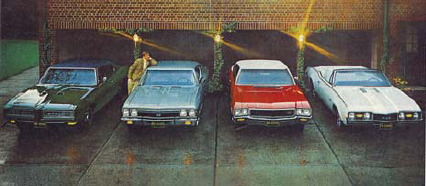
General Motors offered muscle cars in each of their divisions with the exception of Cadillac. The Pontiac GTO, Chevrolet Chevelle SS, Buick Skylark GS, and Oldsmobile 442 were featured in several ads together and had established followings by 1968.
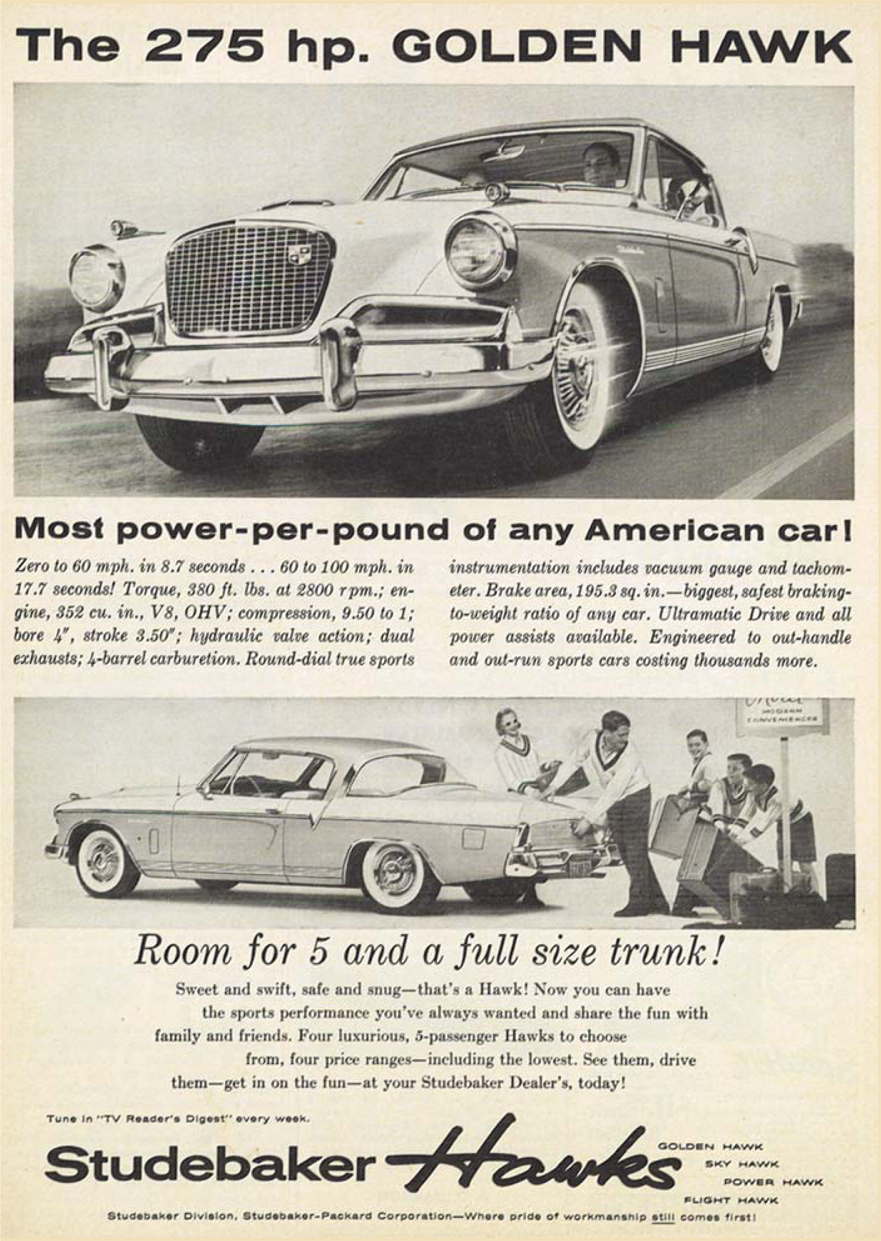
The Studebaker Golden Hawk may have featured a 352-cid V8, but, like the Chrysler C-300, it was luxurious and expensive. This was attractive and obtainable by middle-aged adults with families but not younger buyers.
I N 1955, the debut of Chryslers C-300 embodied the desires of many and pointed to an increasing horsepower competition between American automakers. Mating a powerful engine to a four-passenger coupe was at the heart of what would become a muscle car revolution. The C-300 was powered by a 331-cubic-inch-diameter (cid) Hemi V8 engine producing 300 horsepower (hp). This would make the C-300 the most powerful factory-produced passenger car when released. Chryslers were (and still are) known for being luxurious, and the C-300 was no exception. This luxury and performance came at a 1955 base price of $4,929, which limited production to just 1,725 examples built.
The end of World War II brought many servicemen home to families and sweethearts. These younger baby boomers grew up in a period of great economic wealth. They had more than any generation before them, and they felt special. A desire for cutting-edge technology and uniqueness drove their buying habits. This redefined the way Americans looked at the automobile.
Extremely conservative executives at the Big Three automakers in the United States (Chrysler, Ford, General Motors) were content with the status quo of automotive design. American automotive designs of the 1950s focused on the influence of the jet age. Many cars featured target or bomb sight hood ornaments, large upright fins as part of the fenders, and exhaust pipes that protruded through the rear bumper. Only the rise of younger executives and engineers would change the situation. Men like John Z. DeLorean, Harley Earl, and Zora Arkus-Duntov would lead the charge for greater performance and designs appealing to the relatively untapped youth market. Until their time, performance was secondary to plush amenities and a soft ride that would absorb miles of rough roads with aplomb. The C-300 was an effort to merge the two views, but it was not the first.
Americas first true sports car, the Corvette, sped onto the road in late 1953. Harley Earls creation was introduced at the GM Motorama in 1953 with a standard Blue Flame in-line 6-cylinder engine. It was not until the 1955 model year that a V8 engine was offered as an option. Arkus-Duntov, known as the father of the Corvette, helped introduce the V8 option. He recognized the need for performance and assisted in coaxing a conservative company into one with youth appeal.
The Corvette was marketed to returning veterans who desired the small sporty cars they had seen while stationed in Europe. Many British and Italian sports cars were already being imported and finding their way onto American roads and racetracks. However, they lacked the power of a V8 engine and had the limitation of only being two-seaters, like the Corvette. In addition, the all-composite body and $2,774 price of the Corvette made it ineligible to be a muscle car. Although the Corvette possessed V8 power, which improved performance, it still did not qualify as the first muscle car.
Defining a muscle car is no simple task. Ask any two automotive enthusiasts, and you will get different answers on a definition. The strictest definition does incorporate several key elements, though. Only intermediate-sized coupes and later convertibles that were standard production vehicles qualify. They must be powered by the largest capacity, highest performance version of a V8 engine in a particular manufacturers model. Some consider 350 cubic inches and above the requirement for muscle car status. A stout drive train, brakes, and suspension aid in managing the brutal power.
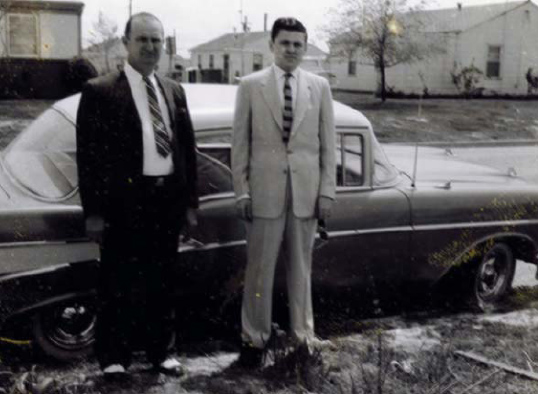
The rising youth market wanted more performance from their cars than the previous generation. Making these cars affordable meant less opulence, which appealed to the mature drivers who remembered the Ford Model As of yesteryear.
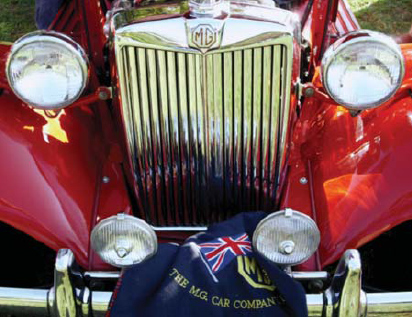
European cars made a lasting impression on those Americans who had seen military service in Europe. British makers like MG and Triumph had success in the postwar years that the Corvette would share.
The smoky burnouts associated with muscle cars would not be possible without the power being transmitted to the drive wheels. Therefore, most high-performance models moved the manual transmission shifter to the floor and offered four speeds instead of the standard three forward speeds. An additional gear allowed for brisker acceleration and a higher top speed. Some drag racers, or diggers, preferred the heavy-duty automatic transmissions for quicker shifts that would not miss a gear when shifting.
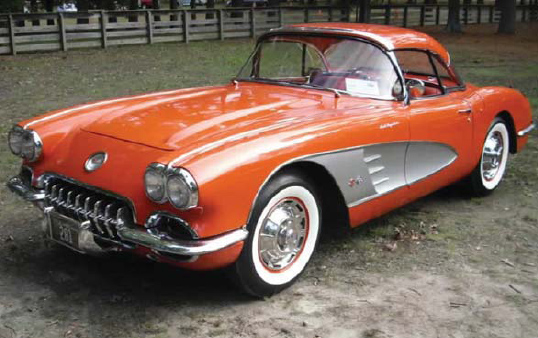
Chevrolets Corvette debuted in 1953, but it was not until 1955 that a V8 was available. In 1957, fuel injection became available, which raised the price of this two-seater sports car even more beyond a young buyers reach.
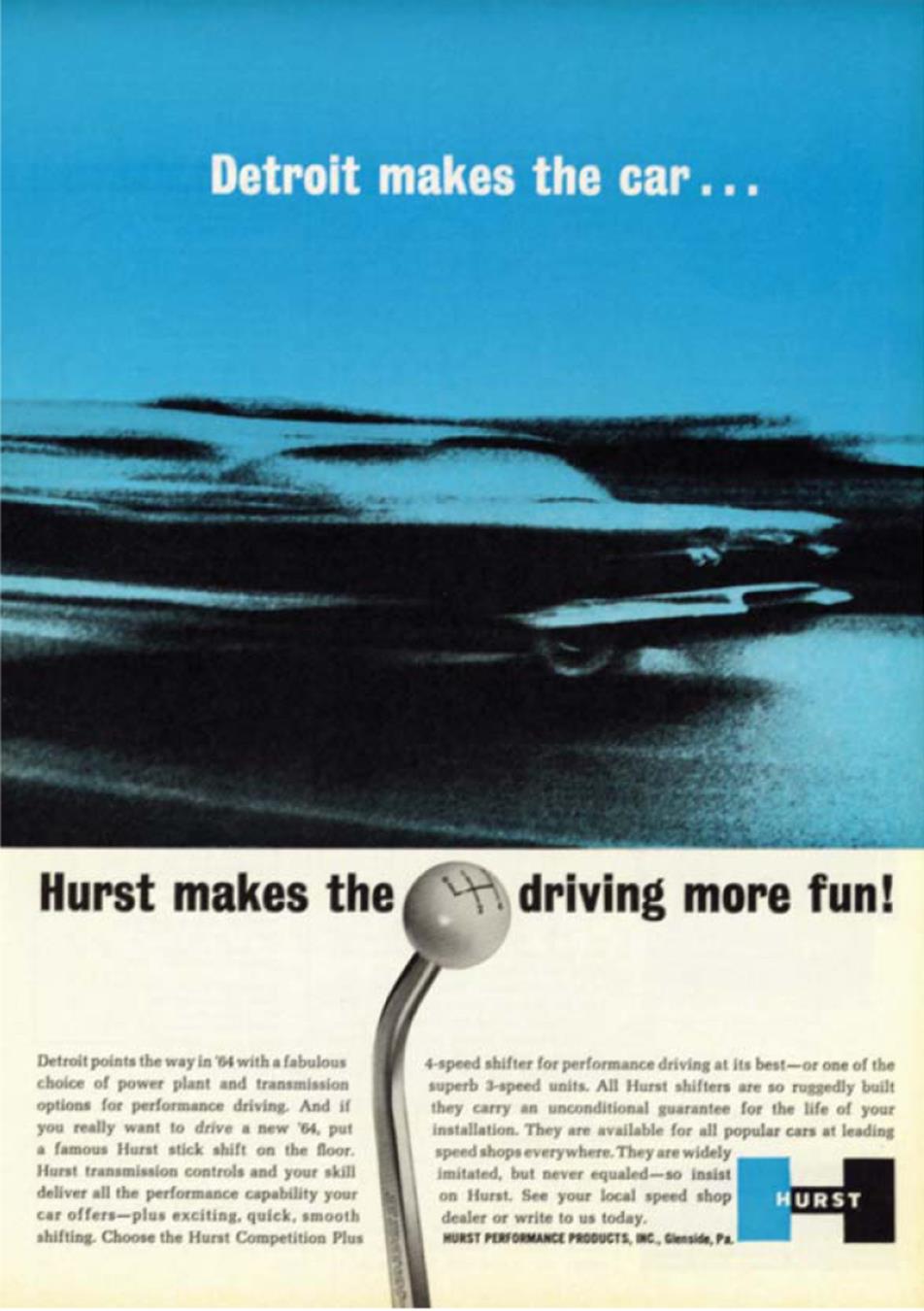
George Hurst cofounded Hurst-Campbell in 1958 and was a supplier of performance products to several U.S. manufacturers. Hurst made such a reputation with drag racers for his great shifters and clutches that many of his products were original equipment on many muscle cars.
Power and torque were sent to the rear axle, which transmitted power to the ground. Manufacturers offered different rear-axle gears, which could range from a high ratio for brisk acceleration to lower for more comfortable highway cruising. Limited-slip differentials helped to minimize wheel spin and transmit power to the ground. Chevrolets Positraction is one of the most famous limited-slip differentials. The downside to posi, as it is commonly known, is that it can change the handling of a vehicle. While providing additional traction for acceleration, it also can induce oversteer in tight corners.
Increased power necessitated better braking and suspension designs. Brakes on most cars consisted of drum brakes all around. More powerful disc brakes would become standard on the front of more high-performance models, especially muscle cars. This would bring 3,000 pounds or more of car to a stop in a reasonable but not exceptional stopping distance. Suspensions would be strengthened with stiffer springs and attachment points as well as wider-profile tires for better traction and cornering.
Font size:
Interval:
Bookmark:
Similar books «Muscle Cars: The First American Supercars (Shire Library USA)»
Look at similar books to Muscle Cars: The First American Supercars (Shire Library USA). We have selected literature similar in name and meaning in the hope of providing readers with more options to find new, interesting, not yet read works.
Discussion, reviews of the book Muscle Cars: The First American Supercars (Shire Library USA) and just readers' own opinions. Leave your comments, write what you think about the work, its meaning or the main characters. Specify what exactly you liked and what you didn't like, and why you think so.

